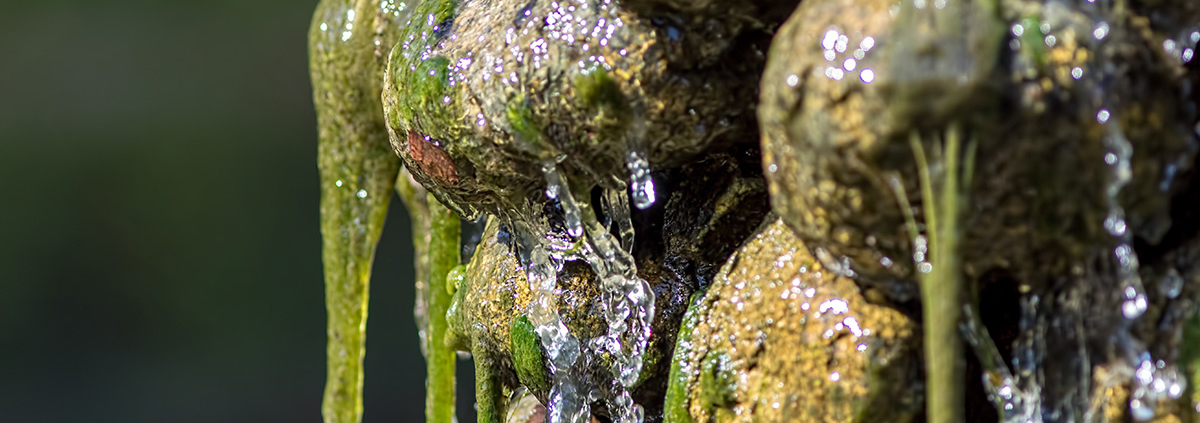#4 Origin of Life
Those of us engaged by this series are curious by nature. We are educated people and enjoy the quest for knowledge and understanding. We want to know things about our world and discover its truths for ourselves without indoctrination. And when we sense we are being bullied with bluster, we react negatively and confront it with doubt. That’s the spirit of true science and the spirit of true religion. Even though there are more mysteries than answers, we are driven to know. Inquiring minds want to know! That’s the thesis behind Socrates@SaddleBrooke — to explore the Big Questions of life because we sense “the unexamined life is not worth living.” In this series on science and faith, we are examining the Big Questions about origins and destiny. What answers do science and the Bible offer? Are they in agreement or disagreement? Are they reconcilable?
One of those questions and the subject of this discussion is: What is the origin of life? Where did I come from? When we were children, the answer was simple. It was probably along the lines of “Mommy’s tummy.” (I hope it wasn’t “The stork brought you.”) As adults, some are satisfied with their genealogical tree to be found in sources such as ancestry.com. For many others, the answer provided by their faith is sufficient: “God made me.” In this discussion we will explore how modern science and an ancient holy book, the Bible, answer the question, examining the evidence that supports each.
One thing we now know for sure is that life comes from life. It was once believed that life came from non-life. Flies were thought to come from dirty rags, but it was discovered that the flies came from maggots that developed from eggs that flies laid in the rags. Louis Pasteur finally disproved this theory of “spontaneous generation” showing that “life only comes from life.”
The line of ancestry for all creatures begins with “Mommy.” For biblical believers, that line extends back to Adam and Eve, and then to God who created them. But how it happened is the question science asks. Evolutionists say our line of ancestry extends back through a lineage of ape-like creatures, which, in turn, came from a long line of other creatures (common ancestors), all the way back to LUCA (the Last Universal Common Ancestor). LUCA originated somewhere, somehow in a primordial “soup” of chemicals on the ancient planet Earth some 3.8 billion years ago. Is that true? What does the evidence show?
Both the Bible and science reveal an advancing sequence of creatures from the beginning, starting with a simple life form and advancing to the most complex life form — us. The current session focuses on the creation of the very first life form. The next session will trace the alleged ancestry from that first life to us. (Or as some have said, “from goo to you.”) Both sources tell us that the first life originated in the waters of early Earth. The scientific evidence starts in the fossil record with simple single-cell creatures (prokaryotes); proceeds through more complex single-cell creatures (eukaryotes); then simple multi-cell creatures — all existing some 3 to 4 billion years ago in what is called the Precambrian Period. Around 600 million years ago, in a minute span of geological time, most all the major groups of complex creatures appeared (“as if out of nowhere without evolutionary history!”) in an event known as the Cambrian Explosion. The biblical account (Genesis 1) is rather succinct about this history but says that life originated “in the waters” with God speaking it into existence, along with the “plant yielding seeds.” Science agrees and defines the first “seeds” as algae and cyanobacteria — both single-cell living organisms. According to the Bible, the first complex creatures were the “swarms of living creatures” created when God said, “Let the waters teem” with them.
We ask, is it possible for life to originate from nonlife as science speculates (abiogenesis)? What is life as compared to nonlife? What does the chemistry look like? Do we know any mechanisms that create life’s chemistry (organic) from nonlife chemistry (inorganic)? What do we know about the circumstances and environment of early Earth that might have led to this transformation? How is life capable of replicating itself? Where does the “recipe” come from?
In laboratory experiments that attempt to simulate the early Earth’s environment, a number of hypotheses have been developed and tested throughout the 20th century. We will look at the two most prominent — the Oparin-Haldane theory (1920s), and the Miller-Urey experiments (1953), which produced some simple amino acids in a test tube. Sparks of energy were blasted through molecules of hydrogen, methane, ammonia, and water — supposedly the elements of the early Earth’s atmosphere. Could these inorganic compounds combine accidentally to form the organic compounds of life? The experiments made media headlines for decades — “Life has been formed in a test tube!” — and the work is still featured in high school and college textbooks. However, these findings have been subsequently discredited. Are we being duped into accepting abiogenesis (life arising from nonlife) when all the evidence says, “No way!”?
Today, we don’t know and can’t understand how life could have originated on planet Earth, especially self-replicating life! So current speculation for the source of life has shifted to outer space (Moon, Mars, even the moons of Jupiter and Saturn) in hopes of finding it there, and supposing that life somehow found its way to Earth. In 1996, researchers claimed that a four-pound meteorite, originally from Mars but recovered in Antarctica, contained fossils and chemical signatures of life. Early enthusiasm was expressed by many astronomers and the media proclaimed, “It will change the way we think about life in the universe.” But what has subsequent research revealed? What is the overall evidence for life being seeded from outer space? We are more baffled now than we were 50 years ago.
In the 1970s scientists began speculating that Earth is not a unique place in the universe. Earth may be just one of trillions of similar planets. Life could have started “out there somewhere” and been subsequently transported to Earth, either accidentally or with intent, by an advanced civilization. These “panspermia” theories remain mere speculation.
Today there are no scientific answers to the Origin of Life (OoL) problem, but trying to find a naturalistic solution proceeds at full speed. The biblical story written down some 3,500 years ago still stands unchallenged — life is the special creation of a purposeful God. Naturalism doesn’t accept this explanation because by definition, naturalism is atheistic (God doesn’t exist). But there is nothing in science, logic, or reasoning that obviates creation as a legitimate path of inquiry. In fact, it remains the most likely inference to the best explanation.
Not all believers, however, share the same interpretation of the biblical text. Some ask, why would God bother to take billions of years when he could have spoken it into existence instantaneously, or in a 24-hour day? They opt for “Young Earth Creationism,” estimating the age of the Earth at under 10,000 years old. Others accept the current scientific evidence for the age of the Earth and life in it (Old Earth Creationism), saying the Bible can be interpreted that way. They also say, from a scientific standpoint, that billions of years were necessary for Earth to develop a “home” for life to exist. Others see the Genesis accounts as allegorical, so they don’t have problems reconciling the two. Another group accepts Darwinism (the next session in the series) and conjoins biblical faith with evolution.
In the 1990s a new science was born — Intelligent Design (ID). It postulates that “design in nature” can be scientifically detected and claims that following the ID path of inquiry will lead to better science. The “design of life argument” that was abandoned in the mid-19th century is back on the table with scientific gusto (even though strongly reviled by naturalists) and is gaining strong credibility.
RECOMMENDED READING FOR FURTHER STUDY
Signature in the Cell: DNA and the Evidence for Intelligent Design, Stephen C. Meyer, HarperCollins Publishers, 2009
Foresight, How the Chemistry of Life Reflects Planning and Purpose, Marcos Eberlin, Discovery Institute Press, 1019
The Design Revolution: Answering the Toughest Questions about Intelligent Design, William A. Dembski, InterVarsity Press, 2004
Origins: A Skeptic's Guide to the Creation of Life on Earth, Robert Shapiro, Bantam Books, 1987
The Mystery of Life's Origin: The Continuing Controversy Part I, Thaxton, Bradley, and Olsen; Part II, The State of the Debate, Tour, Miller, Gonzales, Wells, Meyer, Discovery Institute Press, 2020
Addressing Abiogenesis, Seasons 01 and 02, Dr. James Tour, YouTube.com
The Miracle of the Cell, Michael Denton, Discovery Institute Press, 2020
Origins of Life: Biblical and Evolutionary Models Face Off, Fazale Rana and Hugh Ross, RTB Press, 2014
The Stairway to Life, An Origin-of-Life Reality Check, Change Laura Tan and Rob Stadler, 2020
Evolution and Intelligent Design in a Nutshell, Lo, Chien, Anderson, Alston, Waltzer, Discovery Institute Press, 2020
Genetic Entropy & the Mystery of the Genome, John C. Sanford, FMS Publications, 2014
What is Life?: Investigating the Nature of Life in the Age of Synthetic Biology, Oxford University Press, 2009, Ed Regis



